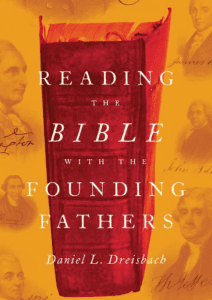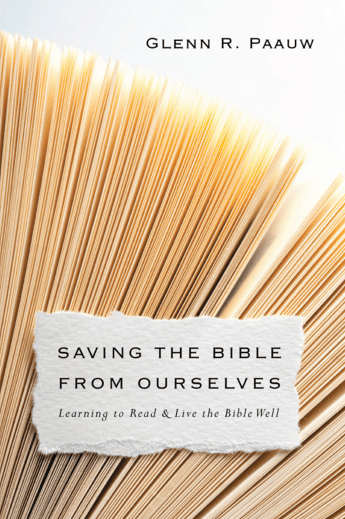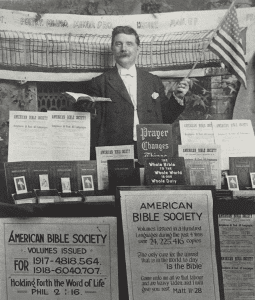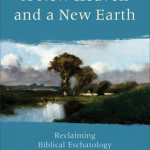I have had a conversation with a number of Bible professors about the state of the Bible in America’s churches and among America’s Christians. The drive to relate everything to “felt needs” shakes loose the foundations from a Word-shaped spirituality. The difference is noticeable and significant: instead of listening to the Bible because it is God’s Word, and instead of listening to whatever it says because it is God’s Word, and because of listening to whatever it says as significant for us, felt needs teach us to relate the Bible to ourselves and to find the significance of the Bible in what it can do to help us in our felt needs.
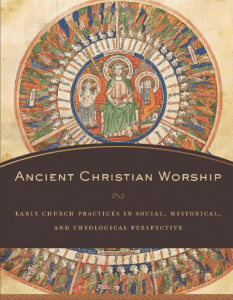 That is why it is important to discover where the Word is located in our spirituality and worship. Does it stand over us and we under it (to use images from Bonhoeffer) or does it function to serve us?
That is why it is important to discover where the Word is located in our spirituality and worship. Does it stand over us and we under it (to use images from Bonhoeffer) or does it function to serve us?
Andrew McGowan, in Ancient Christian Worship, sketches these elements of practice in Christian worship: meal, Word, music, initiation, prayer, and time. We look today at Word.
Here is his splendid opening (numbers added):
Words are an unavoidable medium for transmission of ideas and culture, but for Christians words have been more than just vehicles. Like Judaism and Islam, (1) Christianity esteems Scripture as a unique source of revelation. Like them, (2) it attributes creation itself to God’s speech. Unlike either of these Abrahamic relatives, however, Christianity has also suggested that the divine Word is (3) intrinsic to God’s being and that the verbal instrument of creation is (4) also the subject of the incarnation.
Word as revelation/scripture, creative act, being of God, and incarnation.
Those themes in the faith led to a centrality of Word as integral to worship: reading and preaching Scripture, attending to Scripture, being soaked in Scripture, living out of Scripture.
1.0 Word in the Synagogue
The origins of a Christian praxis of the Word is in the Jewish synagogue’s use of Scripture. But we don’t know that much about 1st Century synagogues, in spite of what is often claimed. We should not impose the later rabbinic synagogue onto 1st Century Judea or Galilee or the diaspora. The primary liturgical or worship center was the temple. The earliest word for synagogues was proseuche, or prayer place. Famously, the Theodotos inscription: “he built the synagogue for the reading of the Law and for the teaching of the commandments, and the hostel, the rooms, and the water fittings, as accommodation for those in need from abroad” (67). Hence a hostel and place for education.
But what we learn from the evidence is that the synagogue was about Torah reading, instruction and discussion. Torah wasn’t a small part of the “service” but the point of the synagogue. This was not a “study” center so much as a “listening” center since few could read — hence, they came to hear and learn and discuss. It wasn’t a library for study but a place to be taught. Before long this reading and instruction occurred in an orderly fashion — hence, lectionaries eventually developed.
But these were not “one-sided rhetorical performance” (70) and neither were they simply mirrors of synagogue services:
So Jesus’ and Paul’s synagogal Scripture events, as well as Philo’s description of study there, seem more like communal Bible study with some authoritative input than “liturgy.’ … The first Christians would have been familiar with some of these synagogal reading practices, but that does not allow us to prejudge how those actually influenced early Christian assemblies. Churches were not “synagogues,” and in any case there was neither a recognizable “synagogue service” nor a lectionary nor an established homiletic form to adapt straightforwardly to Christian use (71).
2.0 First Christian “Preaching”
The earliest evidence about the Word in the ecclesia reveals preaching as something mostly to the already converted, and the formality of it simply isn’t that clear. We need to keep in mind a text like 1 Cor 14:26-31 (NRSV):
1Cor. 14:26 What should be done then, my friends? When you come together, each one has a hymn, a lesson, a revelation, a tongue, or an interpretation. Let all things be done for building up. 27 If anyone speaks in a tongue, let there be only two or at most three, and each in turn; and let one interpret. 28 But if there is no one to interpret, let them be silent in church and speak to themselves and to God. 29 Let two or three prophets speak, and let the others weigh what is said. 30 If a revelation is made to someone else sitting nearby, let the first person be silent. 31 For you can all prophesy one by one, so that all may learn and all be encouraged.
McGowan comments: “This picture of a collective set of inspired discourses, with neither “sermon” nor reading of Scripture, is the earliest direct evidence for how speech functioned in one Christian assembly” (75). We don’t know what sermons looked like clearly until 2 Clement. Prior to that we have words (“word of exhortation”) but not sermons. Here is McGowan’s conclusion:
Evidence of the earliest Christian homiletics thus suggests no single model, but the situational adaptation of Greco-Roman rhetorical and other conventions to a version of the common meal or symposium (78).
3.0 Ancient Christian Reading
The earliest Christians had a “reading culture”: a text was performed and engaged by those who heard the performance. The meal was often the setting. McGowan is unsure how much scripture was read aloud in Christian gatherings, but there is solid evidence that the letters of Paul were read aloud in the ecclesia. Synagogues clearly read Torah. I think he minimizes the analogy and the probability that early Christians would have read Jewish scriptures in the ecclesia. Later NT books evince public readings (2 Tim 3; 2 Peter).
Eventually, too, the Gospels were read alongside the Letters. Too, the development of the canon itself. This all took time but reflects a growing reading-Scripture culture.
Assemblies for the Word and other topics
The earliest Christians gathered to pray, for catechesis (and this seems to grown around the times of daily prayer).
McGowan discusses the growth of lectionaries, but it seems a lectionary use is a not clear until Augustine’s time (4th Century) and they were connected to the major feasts in the Christian calendar.
He traces the rise of the rhetorically-respectable sermons of Augustine and Chrysostom, beginning with Melito and Origen.


